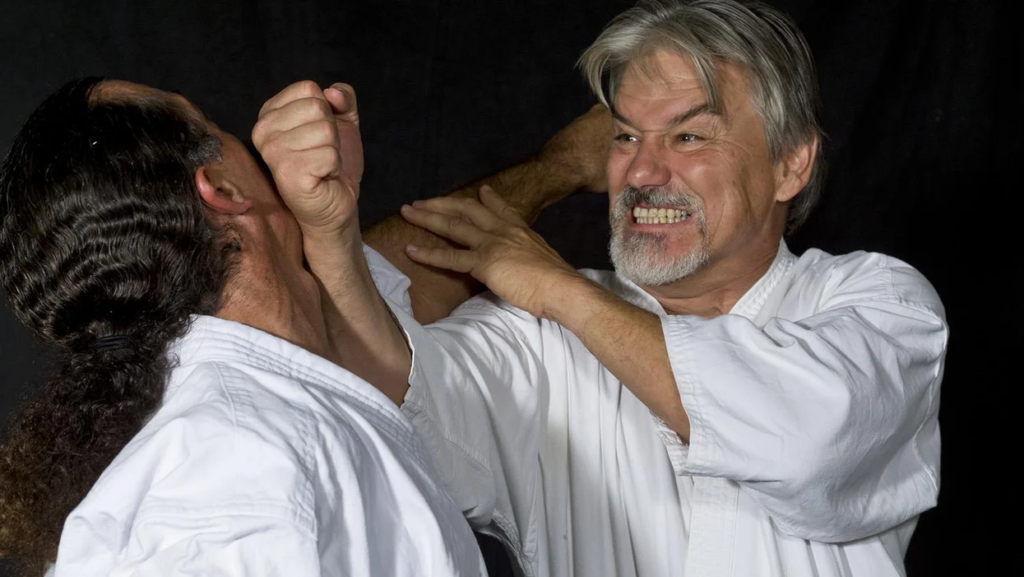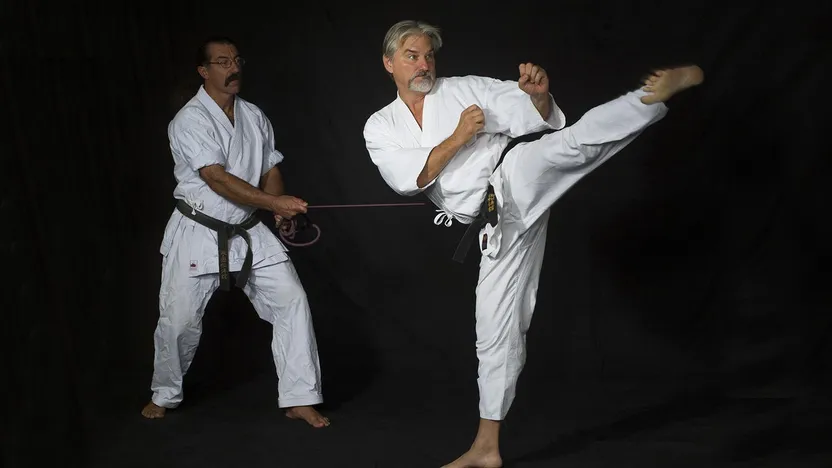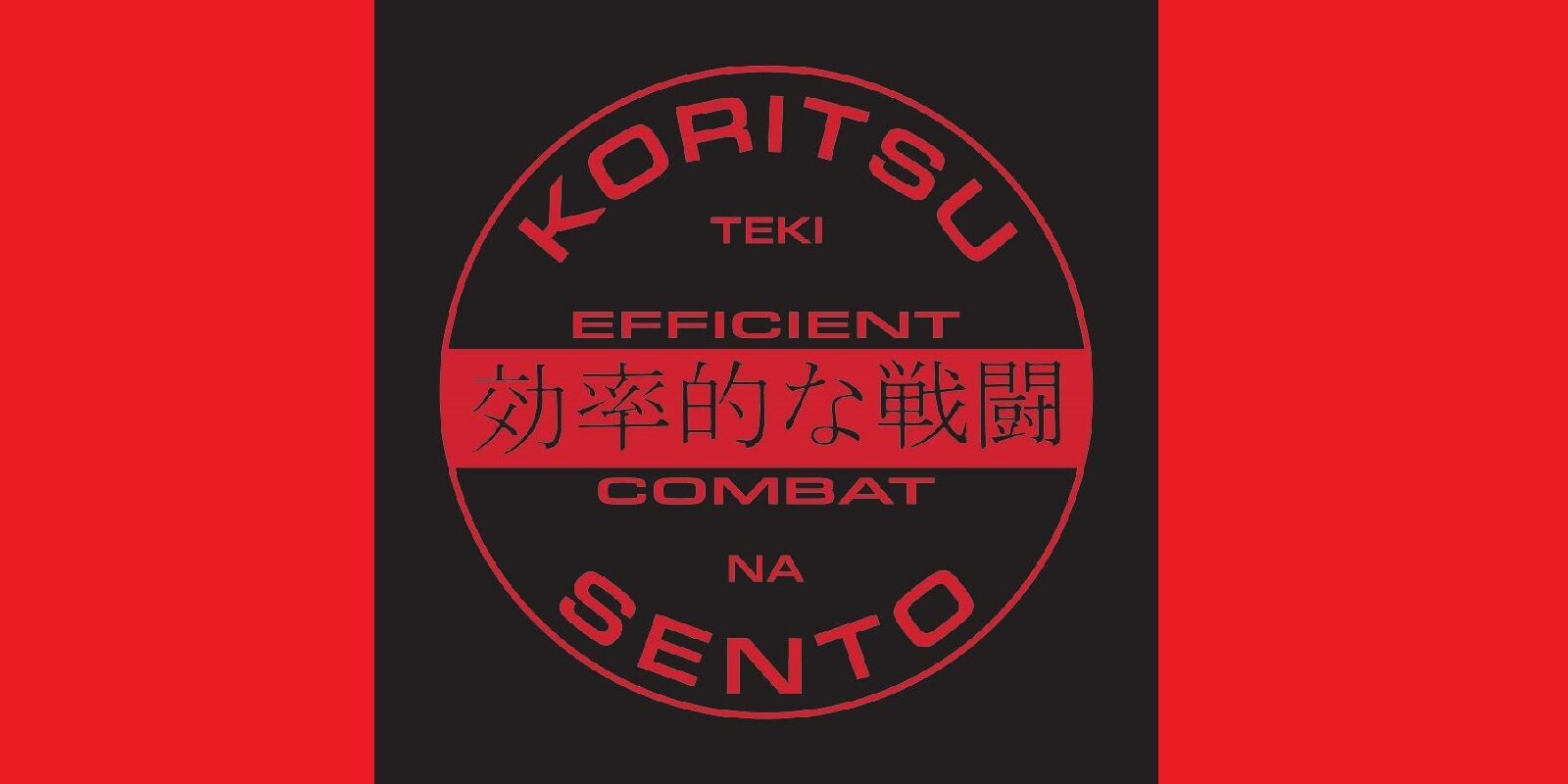Fighting Spirit
February 17 | 2022

Tom Muzila has worn a number of professional hats over the years. The man who once fire-walked across a 15-foot pit more than 100 times without injury has served as a bodyguard and fitness instructor for movie stars, a Green Beret in the U.S. Army during the Vietnam era and a stunt coordinator for numerous Hollywood films. Through it all, Muzila has always displayed his trademark intensity and toughness.
A shotokan karate expert with decades of experience under the legendary Tsutomu Ohshima, Tom Muzila also climbs mountains and has been known to execute 10,000 punches in a single practice session. These days, however, he spends much of his time teaching the martial arts around the world. A big part of what he tries to impart to his pupils — and what he personifies in his martial arts and non-martial arts exploits — is “fighting spirit.”
Fighting Spirit Through the Ages
“If you go back in history to the higher-level samurai, to be able to face death and all their fears and insecurities was probably the first prerequisite in a way,” Tom Muzila says. “They felt like unless they could do that and express themselves 100 percent, they could never function at an optimum level on the battlefield.
“Anytime they faced an opponent and worried about who he was, what type of weapon he had or what his technical level was, their mind would become attached to that — and inhibited by it.”
A famous Zen Buddhist master once described fighting spirit. “He wrote that if your mind becomes attached to all these other elements,” Muzila says, “it can’t really express itself fully, see the truth or really penetrate your opponent.”
Going even further back into history, he cites Genghis Khan as a prime example of a leader who possessed and used fighting spirit. The Mongol chieftain would position 50 warriors in the front ranks of his armies, Muzila says. These men did not care about dying; they just plunged into the enemy lines and wreaked destruction. Because they were able to totally control their fear and keep on fighting to the death, the Mongol armies were extremely successful.

“With that kind of spirit, they did not have to be as talented as somebody else,” Tom Muzila says. “People with fighting spirit just don’t care. They throw their life away and jump in and attack.”
Throwing Away Worries
“In Japan, they have a term — kokoro — which means ‘to throw your life away completely,’” Muzila says. “It doesn’t mean to do it like you’re crazy. It means that you look at your opponent, even if he’s a very high-level martial artist, and remain very cool and calm. It means that you have very intense eyes, and internally you are like a volcano ready to erupt at the right moment.”
The use of fighting spirit in this manner is similar to the way a football player, who is also working at an optimum level, learns to control his rage on an emotional level, Muzila says.
The martial artist must rid himself of all his fears, prejudices and inhibitions — then just fight, Tom Muzila says. “When you face an opponent — whether you’re defending, attacking or waiting for him to attack first — you should go 100 percent.
“If you’re worried about his counterattack, if you’re worried about getting hit or hurt, or if you’re worried because the guy has a really top name or he’s top caliber, your mind is going to be attached to that and it’s going to take it away from [your ability to] penetrate your opponent’s [defenses] at the right moment.
“So the first thing we say is that you have to ‘throw your life away,’ ” Muzila continues. “You do that by facing your opponent and watching his eyes — not just watching his eyes externally but penetrating his mind with your mind and beating him to the task. And when he makes a move at the right moment in your mind, you just crush him in a split second. Then, nothing will be inhibited by fear, reluctance or holding back.”
Eliminating Fear
How do you eliminate fear? The key, Tom Muzila says, is to push yourself to your limits with every block, every kick, every strike you do. Whether you’re training three times a week or five times a week, he says, you should turn on your switch and go, then keep on going.
“You’re training your subconscious mind to get past its inhibitions and fears,” he says. “Eventually, it doesn’t matter who you face or what level your opponent is. If you train your mind enough, it will become a subconscious habit. The way you train is the way you’re going to react in a real fight.
“Whatever inhibitions or fears you have usually [will come up] at some point in a really hard, strong, severe practice.”
You may have a tendency to not make your stance low enough, to not punch or kick hard enough or to not want to face a specific opponent. “A popular term for this is not ‘facing yourself,’ ” he says. “You are your worst opponent. And usually you’re going to break down at your weakest link if you’re facing a strong opponent. That weakness or insecurity is going to come out — whether it is a deficiency in your ability to attack, counter or move.”
Such shortcomings can promote reluctance and holding back, Muzila says. “For example, you’re rock climbing on the face of a cliff and your mind keeps saying, ‘What if I fall? I’m 1,000 feet up, and I’m going to fall and crush my bones.’ You end up working against your own efforts.”
Instead of thinking this way, you should deal with the situation at hand, Muzila says. In a sense, you should forget about the cliff. If your mind gets carried away with what will happen to you if you fall, you cannot concentrate on what’s necessary to successfully climb the mountain, he says. Whether it’s mountain climbing or martial arts, it is very important to gain control of your fears.
Learning Fighting Spirit
Muzila claims that fighting spirit can be taught to any martial artist — from the beginner to the advanced practitioner. Likewise, a person’s style is irrelevant.
When you are training to develop your fighting spirit, you should attack your partner from a specific distance and aim for a specific area, Muzila says. Use any technique you wish, but be sure to attack with total commitment and penetration.
If you start to perform your technique strongly enough, you may end up dissuading your opponent from continuing with the confrontation, he says. The effect is similar to that of a freight train speeding toward you: You are so intimidated that you may not even be able to get out of the way.
Cultivating a fighting spirit can benefit martial artists in all areas of their life, Muzila says. That’s why he conducts training sessions that are specifically geared toward developing it in practitioners. “It [helps] students find out that they’re much stronger internally than they thought they were, and that they can endure much more.”
Story by Rodney Ley • Photos by Rick Hustead
